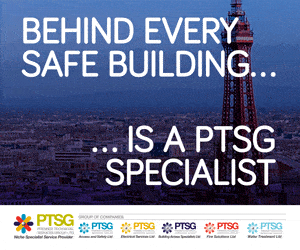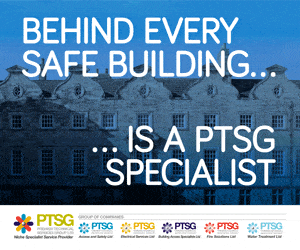A new investigation into fire incidents in England has revealed that a massive 91.5% of callouts to student halls of residence are false alarms.
The study, conducted by health and safety consultants Rhino Safety, reveals that England’s fire services have responded to a whopping 10,380 fire callouts at student accommodation over the last five years, with a worrying 9,501 of these being false alarms.
These false alarms are estimated to have cost England fire departments an eyewatering £4.7 million.
The study collated Freedom of Information requests from regional fire services across England on total fire incident callouts, and the numbers of false alarms vs real fire incidents from January 1, 2019 to December 31, 2024.
The findings paint a concerning picture of fire safety among England’s student population, highlighting areas where safety is most at risk and where fire service time could be most wasted.
North East tops the table for fire service callouts
The North East is responsible for the most frequent fire service callouts to student accommodation from 2019 to 2024, with 87 callouts per 10,000 students – the highest rate of all English regions. This suggests students in the North East are more likely to experience a need for the fire service than their peers elsewhere, raising questions about building standards, student behaviour, or even local reporting practices.
Greater London comes second in the list, with 79 callouts per 10,000 students. Its total number of callouts alone – 3,396 – makes up about a third of all those in England.
On the other end of the spectrum, regions like Yorkshire and Humber (27 callouts per 10,000 students) and East of England (23 per 10,000) have the lowest per capita callout rates. This points to fewer fire incidents in these regions, thanks to better fire safety measures or newer buildings. Alternatively, it could simply mean students in these areas possess a greater understanding of fire safety and reporting practices.
England regions ranked by highest no. of fire service callouts for student halls
- North East – 903 total callouts, 87 per capita
- Greater London – 3,396 total callouts, 79 per capita
- South East – 1,739 total callouts, 75 per capita
- East Midlands – 900 total callouts, 51 per capita
- North West – 1,075 total callouts, 40 per capita
- South West – 690 total callouts, 37 per capita
- West Midlands – 699 total callouts, 33 per capita
- Yorkshire & the Humber – 588 total callouts, 27 per capita
- East England – 390 total callouts, 23 per capita
South West students are most likely to experience a real fire at uni
The number of real fires in student accommodation across England is thankfully low, but they do happen. While only 8.3% of all fire service callouts in the country are to address a real fire, England saw 861 real fire incidents in student halls over the past five years.
South West students seem more likely to experience a real fire in their student digs than other regions, with a total of six real fire callouts per 10,000 students over the last five years. These incidents accounted for 10.8% of all student fire service callouts for the region.
Greater London, East of England, and East Midlands followed next, with just five real fire callouts per 10,000 students, while the North East, North West, South East and West Midlands were even more moderate with four callouts per 10,000 students.
Yorkshire and the Humber would win the award for safest student digs based on this data, with only three real fires occurring per 10,000 students over the five years.
North East students responsible for highest rate of false alarms at student halls
False alarms are a persistent headache for both students and fire services, with 9,501 false alarm incidents recorded in England between 2019 and 2024 – a mindboggling 91.5% of all fire service callouts to student accommodation in the country.
North East students seem the most culpable for false alarms, with 94.8% of all fire callouts being unnecessary – the highest rate of all regions. They are followed by Greater London students (94.3%), South East students (93.9%), East Midlands (91.4%) and North West (89.2%).
England regions with highest rate of false alarms
- North East – 94.8% of total callouts
- Greater London – 94.3% of total callouts
- South East – 93.9% of total callouts
- East Midlands – 91.4% of total callouts
- North West – 89.2% of total callouts
- West Midlands – 87.8% of total callouts
- Yorkshire and the Humber – 86.9% of total callouts
- South West – 83.9% of total callouts
- East England – 83.6% of total callouts
The average rate of a false alarm callout for UK Fire Services is estimated at £500. That would mean that over these five years, false alarm calls to student halls have cost an estimated £4,750,500 in callout fees.
However, this doesn’t take into account the inevitable cost of disruption to operations and lost productivity. This means that the true cost of false alarm callouts to student halls could be significantly higher. False alarm callouts are a major financial burden for UK fire services, costing the country an estimated £1 billion annually.
Reflecting on the results, Simon Walter, Director and fire safety expert at health and safety consultancy, Rhino Safety, said: “For many students, living in halls can be an incredibly exciting time, and may be their first experience of independent living.
“However, this can mean that things like fire safety awareness are easily forgotten or fall by the wayside. While it’s good to see that real fire occurrences are relatively low, incidents like the 2019 Cube fire in Bolton and the 2023 Chamberlain Hall fire in Birmingham are significant reminders that all it takes is one incident to put students at risk.
“It’s clear that false alarm callouts remain a key issue for fire department resources. False alarms not only put pressure on fire services, but they can also contribute to alarm fatigue, which then leads to devastating consequences in the event of a real fire incident.
“Everyone has the right to live and study in safety. We urge all students to really engage with fire safety culture and awareness and make it a key part of their hall experience. By doing so, they can play a key role in keeping themselves and others safe.”





















































